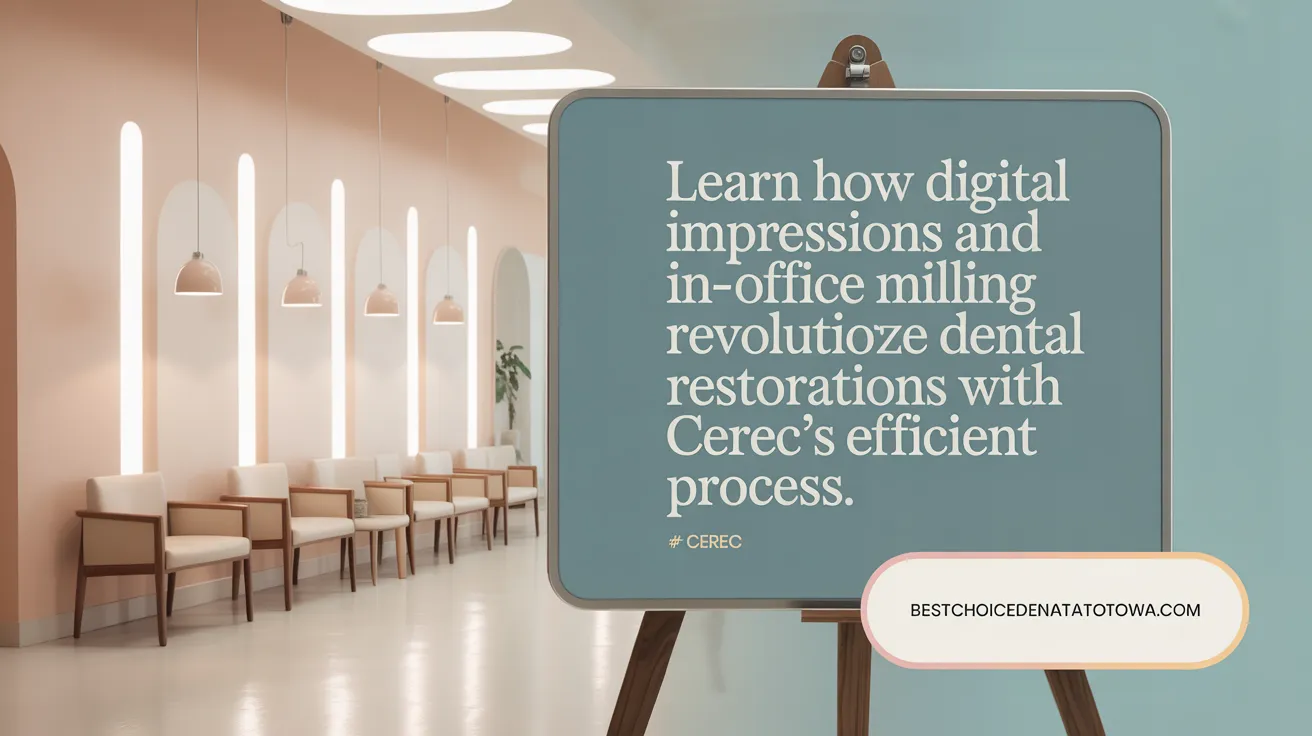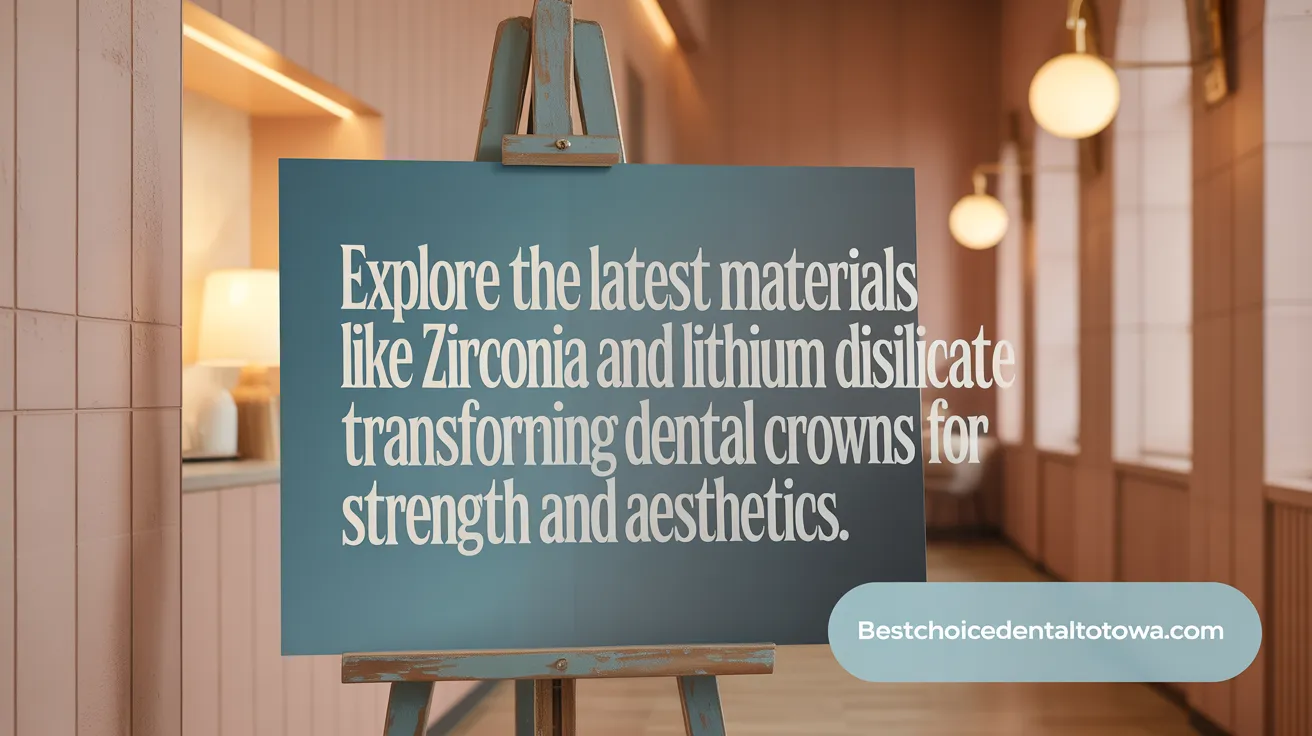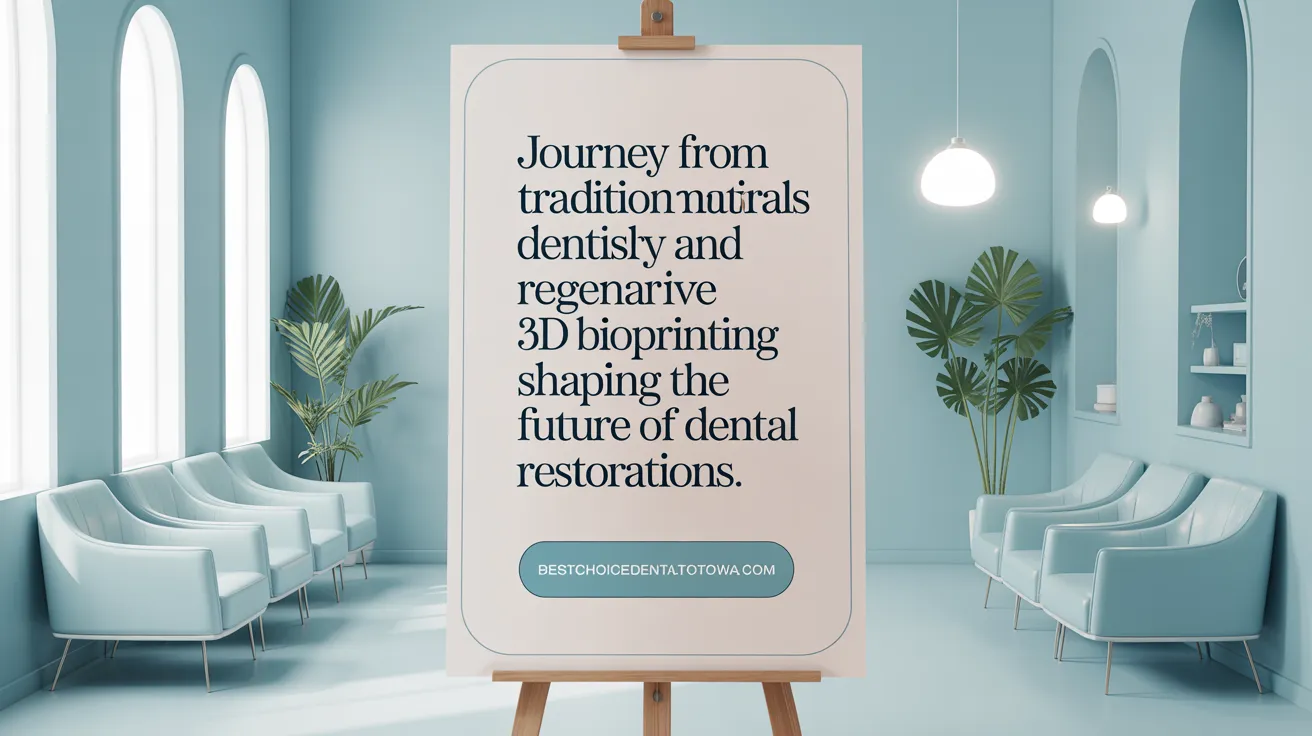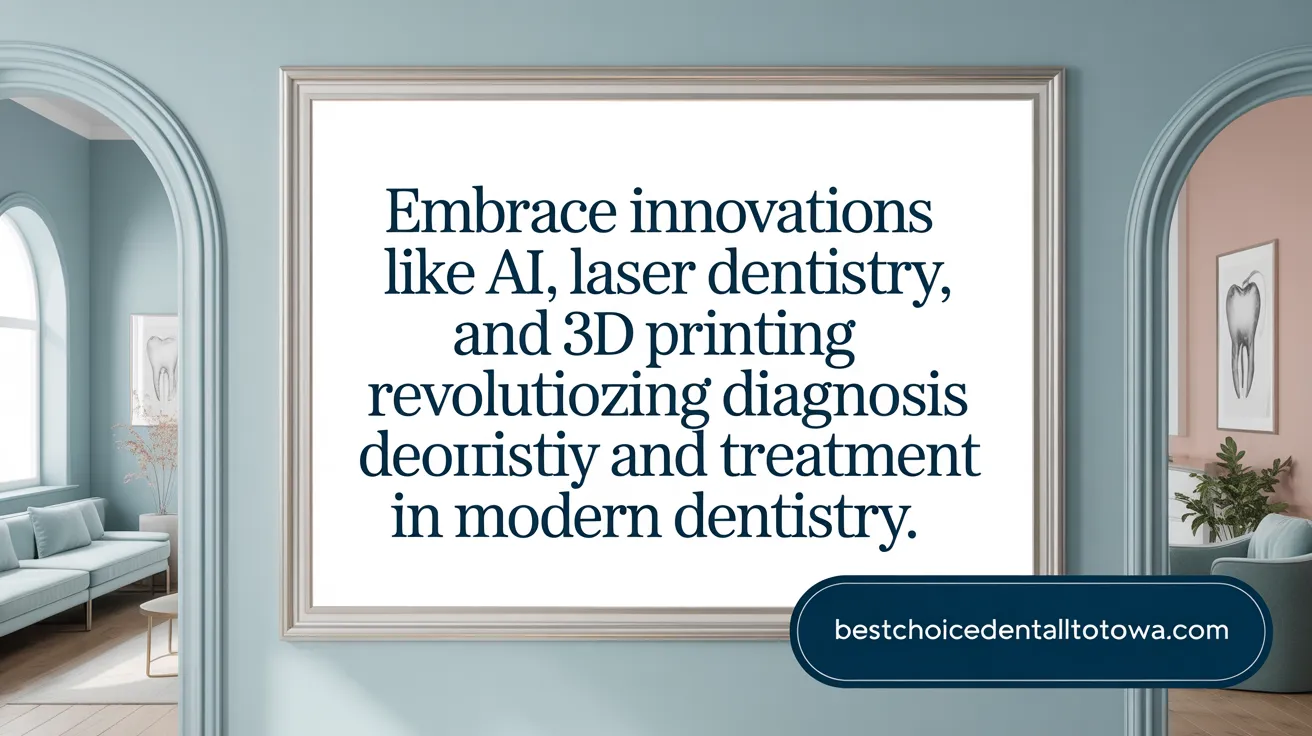Dental Innovation at the Forefront: Transforming Patient Care
Modern dentistry is undergoing a transformative shift, driven by breakthroughs like CEREC crowns and Invisalign clear aligners. These technologies combine digital precision with patient-centered convenience, offering enhanced aesthetics, durability, and treatment efficiency. This article explores the workings, benefits, and future trends surrounding these advancements, illuminating how they are shaping the future of restorative and orthodontic care.
Understanding CEREC Technology: Same-Day Crowns for Enhanced Patient Experience

What is CEREC and what does it stand for?
CEREC stands for Chairside Economical Restoration of Esthetic Ceramics. It is a digital technology that allows dentists to design, produce, and place dental crowns in a single visit. This revolutionary approach reduces the traditional multi-week process, offering significant convenience for patients.
How does CEREC dental crown technology work?
The process begins with digital impressions captured by a small intraoral camera, replacing uncomfortable traditional molds. These high-resolution images are processed through advanced CAD (computer-aided design) software to create a precise virtual model of the tooth.
Using this digital model, the dentist designs the crown to match the shape, size, and color of the surrounding teeth. The design is then sent to an in-office milling machine that fabricates the crown from a ceramic block, typically within 15 to 30 minutes.
This entire procedure takes place during a single appointment, meaning the patient can leave with a prepared crown ready for bonding. No temporary crowns or multiple visits are necessary.
Materials used in CEREC crowns
CEREC crowns are primarily made from various ceramic materials, including feldspathic porcelain, lithium disilicate (also known as E-max), and leucite-reinforced ceramics. These materials are biocompatible, durable, and naturally aesthetic, closely mimicking natural tooth enamel.
Advancements in material science have led to stronger, more resistant ceramics that can withstand biting forces while maintaining an attractive appearance.
Benefits over traditional crowns
CEREC crowns offer several advantages:
- Single Visit Convenience: Completing the entire procedure in one appointment saves time and reduces the number of visits.
- Comfort: Digital impressions are more comfortable than traditional molds, which can cause gagging or discomfort.
- Aesthetic Precision: Digital design ensures a precise, natural look, closely matching the surrounding teeth.
- Elimination of Temporary Crowns: No need for temporary restorations that can be uncomfortable or fragile.
- Durability and Fit: The crowns are milled from high-quality ceramics that resist wear and provide a strong, long-lasting restoration.
- Cost-Effective Long Term: While the initial cost might be higher, savings are realized through fewer visits and immediate results.
Suitability and patient considerations
CEREC crowns are suitable for most applications, especially for teeth requiring aesthetic restoration like front teeth or minor damage repairs. However, in cases where teeth are severely damaged below the gumline or experience very high bite forces, traditional crowns with metal reinforcement might be preferred.
Patients should discuss their specific needs with their dentist to determine if CEREC technology is appropriate. Proper oral health, sufficient tooth structure, and an understanding of the procedure are essential for optimal outcomes.
Invisalign: A Clear Path to Orthodontic Excellence
What is the Invisalign treatment process, including the technology and stages involved, and who is suitable for this treatment?
Invisalign treatment begins with a comprehensive dental consultation, during which advanced digital 3D scans of the teeth are taken using the iTero Element™ scanner. These high-resolution images allow orthodontists to create a highly personalized treatment plan with specialized software like ClinCheck®, mapping out the precise movements of each tooth.
Once the treatment plan is established, a series of custom-made, transparent aligners are fabricated from proprietary SmartTrack™ plastic. Patients are typically instructed to wear each set of aligners for about one to two weeks, removing them only for eating, drinking, brushing, and flossing. The process involves several stages: initial alignment and leveling, bite correction, and finishing adjustments. Throughout treatment, patients have regular follow-ups to monitor progress and receive new aligner sets.
Invisalign is especially suitable for teenagers and adults dealing with mild to moderate misalignments such as crowding, spacing, overbites, underbites, and crossbites. The system requires discipline, as the aligners must be worn for approximately 20-22 hours daily to ensure optimal results. Its discreet appearance makes it an attractive alternative for those who prefer not to use traditional metal braces. For a detailed overview of the Invisalign process and suitability, see How Invisalign Works and Invisalign 101: Everything You Need to Know.
How do clear aligners like Invisalign compare to traditional braces in terms of effectiveness, benefits, and disadvantages?
Compared to traditional braces, Invisalign offers several advantages. Effectiveness-wise, Invisalign often completes treatment faster for mild to moderate cases, typically within 12-18 months, owing to precise digital planning and controlled force application. Its aesthetic appeal is a significant benefit; nearly invisible, the aligners are made from clear plastic, boosting confidence during treatment (Invisalign advantages).
Hygiene is easier since aligners are removable, allowing thorough brushing and flossing without obstacle. Comfort is also enhanced because there are no brackets or wires causing irritation. Fewer office visits are required, generally limited to initial fitting and periodic check-ins (Benefits of Invisalign Aligners).
However, traditional braces are more effective for complex dental issues, offering better control over tooth movement and torque, especially in severe cases. Braces are fixed, requiring less patient compliance but can be more uncomfortable, less aesthetic, and associated with dietary restrictions. They also carry a higher risk of plaque buildup around brackets (Clear Aligners vs. Traditional Braces, Comparison of clear aligners and fixed braces). For further comparison, see Invisalign vs Traditional Braces.
What are the health, aesthetic, and functional benefits of Invisalign treatment?
Invisalign significantly benefits oral health by making it easier to maintain cleanliness, reducing the accumulation of plaque, and decreasing the risk of cavities and gum disease (Benefits of Invisalign). Its nearly invisible aligners help patients feel more confident during social and professional interactions, avoiding the self-consciousness often associated with metal braces (Benefits of Invisalign Aligners, Invisalign clear aligners benefits).
Functionally, Invisalign corrects a variety of bite and alignment issues through gentle, precisely calibrated movements, contributing to better jaw function and reduced stress on temporomandibular joints. This can alleviate headaches and improve speech clarity (Invisalign treatment benefits). Additionally, the removable nature of aligners allows patients to enjoy their favorite foods without restrictions, facilitating better diet and nutrition.
Overall, Invisalign offers a modern, effective, and aesthetically pleasing option for orthodontic correction, emphasizing comfort, convenience, and health benefits for suitable candidates. For more about Invisalign benefits and treatment process, visit How Invisalign Works to Straighten Teeth and Invisalign Advantages.
Advancements in Dental Crown Materials and Manufacturing
 Recent progress in dental crown technology has significantly improved the quality, aesthetics, and efficiency of restorative procedures. One of the most notable developments is the adoption of advanced materials like zirconia and lithium disilicate. Zirconia is renowned for its exceptional strength and resistance to chipping, making it ideal for molars subjected to heavy bite forces, while lithium disilicate—commonly known by its brand name E-Max—offers a perfect balance of durability and natural appearance with excellent translucency that closely mimics natural enamel.
Recent progress in dental crown technology has significantly improved the quality, aesthetics, and efficiency of restorative procedures. One of the most notable developments is the adoption of advanced materials like zirconia and lithium disilicate. Zirconia is renowned for its exceptional strength and resistance to chipping, making it ideal for molars subjected to heavy bite forces, while lithium disilicate—commonly known by its brand name E-Max—offers a perfect balance of durability and natural appearance with excellent translucency that closely mimics natural enamel.
Digital impressions using intraoral scanners have replaced traditional molds, providing dentists with highly accurate 3D images of the patient’s teeth. This technology not only enhances precision but also improves patient comfort by eliminating the uncomfortable impression materials previously used. These digital scans allow for more precise customization of crowns, ensuring a better fit and reducing the need for adjustments.
3D printing technology has revolutionized crown fabrication by enabling in-office, on-demand production of dental restorations. This method allows for faster turnaround times and highly customized solutions, including temporary crowns, saving both time and costs. With 3D printing, crowns can be produced with remarkable accuracy, leading to improved fit and longevity.
Nanotechnology is also making its mark by improving the mechanical properties of crown materials. It leads to increased strength, resistance to wear and stains, and even the potential for self-healing properties—minor cracks or chips may repair themselves, extending the lifespan of the restoration.
Moreover, artificial intelligence (AI) plays a role in optimizing crown design. AI-driven algorithms analyze digital scans to enhance the fit, aesthetic, and functional aspects of crowns. This streamlines workflows, reduces adjustments, and ensures high-quality outcomes, ultimately benefiting both practitioners and patients.
In summary, these technological advancements in materials, imaging, manufacturing, and AI integration are shaping a future where dental crowns are stronger, more natural-looking, longer-lasting, and more efficiently produced—ensuring better patient care and satisfaction.
The Evolution and Future of Dental Restorations

How have dental restorations evolved historically, and what is their future outlook?
Dental restorations have come a long way from the early use of primitive materials like gold, wood, and ivory to the modern high-tech solutions we have today. Historically, gold and amalgam were common choices for repairing damaged or decayed teeth, offering durability but often sacrificing aesthetics. For more information on the history and evolution of dental crowns, see Technology in Dentistry Through the Ages and The Evolutionary Journey of Dental Crowns.
The advent of porcelain and porcelain-fused-to-metal crowns marked a significant leap in restoring both function and appearance. These new materials provided a more natural look, improved biocompatibility, and enhanced durability. Learn about the latest materials used in crowns in Latest Dental Crown Materials and Dental crown innovations.
In recent decades, digital dentistry has profoundly transformed crown and restoration fabrication. Technologies like CAD/CAM technology in dentistry, 3D scanning, digital impressions, and in-office milling systems such as CEREC Technology enable dentists to design and produce precise, custom-fit restorations rapidly. This innovation reduces treatment times from weeks to just a single visit and improves patient comfort. Explore more about CEREC crowns and Benefits of Same-Day Crowns.
Looking ahead, the future of dental restorations is poised for further evolution. Regenerative dentistry is an exciting frontier, aiming to biologically repair or replace damaged teeth using stem cells, tissue engineering, and biocompatible biomaterials. These developments could make artificial replacements obsolete, leading to natural tissue regeneration.
Furthermore, smart materials capable of responding dynamically to the oral environment—such as releasing minerals to strengthen teeth or self-healing minor cracks—are on the horizon. Artificial intelligence (AI) will likely play a crucial role in designing personalized treatment plans, predicting outcomes, and optimizing materials for individual patients. Read more on Artificial Intelligence in Dentistry and AI diagnosis and treatment planning.
Additionally, innovations like 3D bioprinting and biofabrication of living tissues could eventually enable the production of real, functioning teeth, revolutionizing restorative procedures. For insights into 3D printing and custom dental restorations, see 3D Printing in Dentistry and Future of Dental Crowns.
As these technologies mature, patients can expect more durable, natural, and minimally invasive solutions that adapt seamlessly to their unique oral health needs.
Emerging Technologies Shaping the Future of Dentistry
 The future of dentistry is set to be transformed by several rapidly advancing technologies that improve diagnosis, treatment, and patient experience.
The future of dentistry is set to be transformed by several rapidly advancing technologies that improve diagnosis, treatment, and patient experience.
Artificial intelligence (AI) plays a crucial role in this evolution. AI-driven diagnostic tools now analyze dental images to detect cavities, gum disease, and even early signs of oral cancer with greater accuracy than traditional methods. These systems enable personalized treatment plans and streamline clinical workflows, allowing practitioners to offer more precise and early interventions.
Regenerative dental therapies are also making significant strides. Stem cell research and tissue engineering aim to develop treatments that can naturally repair or replace damaged teeth, potentially reducing the reliance on artificial restorations. Such innovations could lead to biological methods of growing new teeth or regenerating lost dental tissues in the future.
Digital imaging and 3D printing technologies have become core components of modern dentistry. High-resolution intraoral scanners replace traditional molds, creating detailed 3D models that enhance the fit and appearance of restorations. Combined with 3D printing, dental professionals can now produce crowns, bridges, and surgical guides efficiently and accurately, often in the same appointment.
Laser dentistry offers minimally invasive options for procedures like cavity removal, gum reshaping, and whitening. With faster healing times and less discomfort, laser tech reduces patient anxiety and enhances recovery.
Finally, smart dental devices such as sensor-equipped toothbrushes and connected water flossers incorporate real-time feedback and data sharing with dental practitioners. Telehealth platforms broaden access to care, especially in underserved areas, and augmented or virtual reality applications enhance both education and patient communication.
Overall, these innovations are steering dentistry toward more personalized, less invasive, and highly effective care, promising better outcomes and broader access in the coming years.
Embracing Innovation for Better Oral Health
Advancements like CEREC same-day crowns and Invisalign clear aligners mark significant progress in dental care by combining cutting-edge technology with patient convenience and improved outcomes. These innovations reflect broader trends in digital dentistry, material science, and personalized treatment planning, offering faster, more comfortable, and aesthetically superior solutions. As emerging technologies such as AI, regenerative dentistry, and smart devices continue to develop, the future promises increasingly efficient, minimally invasive, and tailored dental therapies. By understanding these advancements, patients can make informed choices that align with their health goals and lifestyles, ultimately benefiting from a new era of dental excellence.
